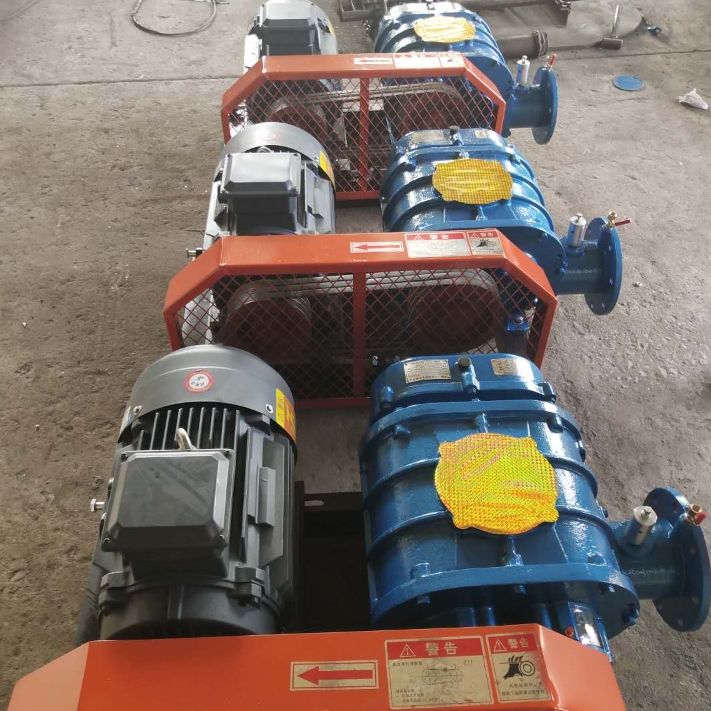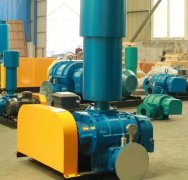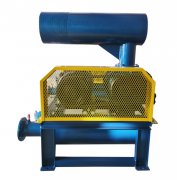Introduction to Roots blower technology for powder conveying, industry attention!
The Roots blower for powder conveying plays an important role in the field of powder material conveying. Here is a detailed introduction to it:
1、 Working principle
The powder conveying Roots blower compresses and transports gas through the relative motion of two blade shaped rotors inside the cylinder. This design enables it to stably transport various powders and granular materials. In the powder conveying system, the airflow generated by the Roots blower serves as a power source to suck in and push the powder material into the conveying pipeline, achieving continuous and stable material conveying.
2、 Characteristics and advantages
1. Stable airflow: Roots blowers have a hard exhaust characteristic of forced air supply, which means that the flow rate changes very little when the pressure changes. This characteristic gives the Roots blower an advantage in providing stable airflow, ensuring the stability and continuity of powder transportation.
2. Wear resistance: Due to the possible presence of particles in powder materials, Roots blowers need to have good wear resistance. By using wear-resistant materials to manufacture key components such as impellers, casings, etc., the service life of the equipment can be extended.
3. Sealing performance: Good sealing performance can prevent powder material leakage and ensure conveying efficiency. Roots blowers are designed with a focus on sealing performance to ensure that powder materials do not leak during transportation.
4. Strong adaptability: Roots blowers can adapt to different powder materials and conveying conditions, such as different particle sizes, densities, humidity, etc. By adjusting the speed and flow rate of the fan, the conveying needs of different powder materials can be met.
3、 Selection precautions
1. Flow demand: When designing a process system, there is usually a surplus capacity left. Therefore, when choosing a Roots blower, it is necessary to consider the system's requirements for fan flow and leave appropriate margins. Generally, it is 1.1 to 1.25 times the required traffic of the system.
2. Boosting demand: The boosting of Roots blower should be balanced with the pressure drop of the system, and leave appropriate margin. Usually, the boost should be 1.05 to 1.15 times the system pressure drop. When selecting, the boost range should be determined based on the actual working conditions.
3. Wear resistance and sealing: Due to the possibility of particulate matter in powder materials, Roots blowers should have good wear resistance and sealing performance.
4. Usage environment and conditions: Factors such as the conveying temperature, humidity, and altitude of the usage location of the powder material also need to be considered, which can affect the operating efficiency and stability of the fan.
5. Energy saving and environmental protection: On the premise of meeting basic requirements such as air volume and pressure, energy-saving Roots blower models should be selected as much as possible to reduce operating costs. At the same time, for projects that require noise levels, high-efficiency and low-speed blowers should be selected, and corresponding noise reduction and shock absorption measures should be taken.
4、 Application Fields
Powder conveying Roots blowers are widely used in multiple industries, such as power, building materials, grain processing, chemical industry, port terminals, etc. In the power industry, Roots blowers are used for transporting fly ash and other powder materials; In the building materials industry, it is used for conveying powder materials such as cement and gypsum; In the grain processing industry, it is used to transport flour, Rice noodles and other powder foods; In the chemical industry, it is used for the transportation of powder raw materials and products such as plastic particles, pigments, catalysts, etc; In the port and dock industry, it is used for transporting bulk cargo such as coal and ore.
5、 Maintenance and upkeep
In order to ensure the normal operation and prolong the service life of the powder conveying Roots blower, regular maintenance and upkeep are required. Specifically, it includes:
1. Regularly check the operating status of the fan, including indicators such as vibration, noise, temperature, etc.
2. Regularly clean the dust and debris inside the fan to maintain its cleanliness.
3. Regularly check the lubrication of the bearings, gears, and other transmission components of the fan, and add or replace lubricating oil in a timely manner.
4. Regularly check the sealing performance of the fan to ensure that no leakage occurs.
5. Regularly inspect and maintain the fan, promptly identify and address potential faults.
In summary, the powder conveying Roots blower has the characteristics of stable airflow, wear resistance, good sealing performance, and strong adaptability, and has been widely used in multiple industries. When selecting, factors such as flow demand, boost demand, wear resistance and sealing performance, as well as usage environment and conditions need to be considered. At the same time, in order to ensure the normal operation and prolong the service life of the fan, it is necessary to carry out regular maintenance and upkeep.



